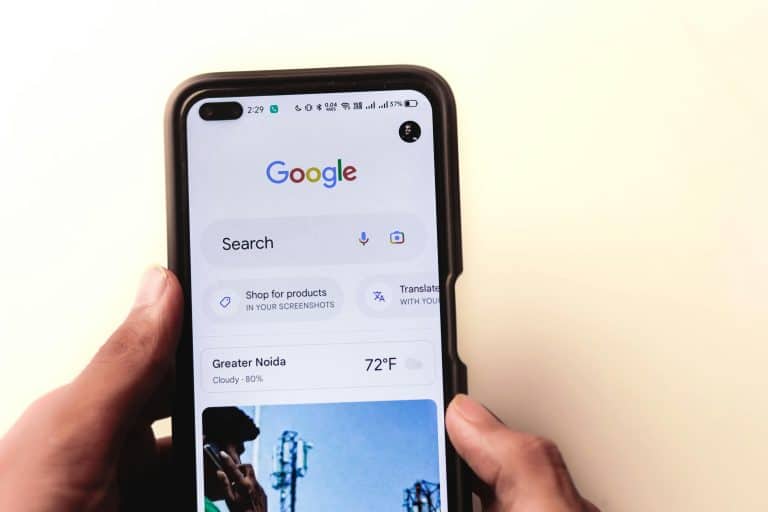Imagine walking into a store where the lights flicker, shelves are disorganized, and the staff looks uninterested. Would you stay? Probably not. Your business website design works the same way—except online, your audience decides in just 50 milliseconds if they’ll stick around.
That said, a poorly designed site with outdated aesthetics, slow loading speeds, or confusing navigation can drive away 38% of visitors—along with valuable leads and sales. For businesses, ignoring these problems is like leaving money on the table.
In this article, we’ll uncover five telltale signs that your website might be underperforming and offer actionable tips to help you create an SEO-friendly website design that drives engagement and conversions. Let’s dive in!
Sign 1: Slow Loading Speeds
Ever clicked on a website, only to wait… and wait… until you give up?
That’s the frustration your visitors feel when your site loads slowly. Studies show that 53% of users will abandon a site if it takes longer than 3 seconds to load. This not only hurts user experience but also drives up bounce rates, signaling to search engines that your site isn’t worth ranking.
In fact, Google prioritizes fast-loading, SEO-friendly website designs, meaning a slow site could bury your business in search results.
How to Diagnose Loading Speed Issues
Not sure how your business website is performing? Tools like Google PageSpeed Insights and GTmetrix offer detailed insights into load times and suggest specific fixes. These platforms provide scores for mobile and desktop performance and flag problem areas like oversized images or excessive server requests.
Solutions to Improve Loading Speeds
Improving load times doesn’t have to be complicated:
- Optimize images: Use compressed formats like WebP to reduce file sizes without losing quality.
- Enable browser caching: This saves static files locally, reducing reload times for repeat visitors.
- Minimize HTTP requests: Consolidate scripts and CSS files to streamline loading.
- Leverage CDNs: Content Delivery Networks distribute your site’s files across global servers, ensuring faster delivery.
Faster speeds lead to happier users, higher rankings, and a website that works for your business, not against it.
Sign 2: Non-Responsive Business Website Design
Have you ever tried navigating a website on your phone, only to pinch, zoom, and squint to make sense of it? Frustrating, right? With over 60% of global web traffic coming from mobile devices, a mobile-friendly, responsive website design isn’t optional—it’s essential. Responsive design ensures your site looks and works seamlessly across desktops, tablets, and smartphones, meeting users wherever they are.
Consequences of Non-Responsive Design
A site that doesn’t adapt to screen sizes alienates mobile users, driving them away in search of something easier to use. Beyond frustration, it also impacts engagement: users are less likely to browse, interact, or convert on a poorly designed mobile site. As previously mentioned, search engines like Google penalize non-responsive websites, dropping them lower in mobile search rankings.
How to Implement Responsive Design
- Use frameworks like Bootstrap or CSS Grid, which simplify designing layouts that adjust to any screen size.
- Optimize fonts, buttons, and menus for touchscreens—no one likes hunting for tiny links on their phone.
- Test your site across devices and screen resolutions using tools like BrowserStack or simply resizing your browser window.
A responsive, user-friendly website keeps visitors engaged and signals to search engines that your business is ready to serve every audience, everywhere.
Sign 3: Outdated Aesthetics and Content
Your website is often the first touchpoint for potential customers, and first impressions matter. A site with outdated aesthetics or stale content sends the wrong message, making your business seem untrustworthy or stuck in the past. A modern, polished website builds trust, keeps visitors engaged, and ensures your brand stays competitive in today’s digital-first world.
Identifying Outdated Elements
- Obsolete Design Trends: Think of cluttered layouts, overuse of stock photos, heavy drop shadows, or skeuomorphic designs. These trends can make your website feel like a relic of the past.
- Stale Content: Blog posts, case studies, or news sections that haven’t been updated in over a year suggest inactivity.
- Broken Links: Dead or misdirected links frustrate users and hurt your search engine rankings.
- Non-Mobile-Friendly Business Website Design: If your site doesn’t work well on mobile devices, it’s already outdated. Responsive web design is no longer a luxury; it’s a must-have.
- Flash Elements or Outdated Plugins: Flash has been obsolete for years, and older plugins are often security risks. If your site relies on these, it’s time for an upgrade.
- Inconsistent Branding: Mismatched fonts, colors, or logos create a disjointed experience and reduce credibility.
Strategies for Modernization
- Conduct Regular Content Audits: Set up quarterly reviews of your website to identify stale content and broken links.
- Adopt Modern Design Trends: Use clean, minimalist layouts, bold typography, and intuitive navigation.
- Invest in High-Quality Visuals: Replace stock imagery with custom photography or illustrations that align with your brand.
- Emphasize Mobile Optimization: Test your site on multiple devices to ensure responsive functionality.
Need a website that works as hard as you do? Pascual Creative specializes in transforming outdated sites into business powerhouses.
Sign 4: Poor Navigation and User Experience
A website should feel like a well-lit, clearly marked road, guiding visitors effortlessly to their destination. But when navigation is confusing, cluttered, or inconsistent, it leaves users frustrated and more likely to abandon your site altogether. Complex menus, hidden links, or a lack of clear direction can quickly lead to high exit rates and lost opportunities.
Assessing Navigation Issues
Understanding where users struggle is the first step to improvement. Tools like Hotjar can provide heatmaps and session recordings, showing how visitors interact with your site. Look for common pain points, such as repeated clicks on unlinked elements or users abandoning the navigation menu entirely.
Enhancing Navigation and UX
Simplify and streamline your navigation structure by:
- Prioritizing clarity: Use straightforward menu labels and group related items logically.
- Minimizing options: Limit top-level menu items to five or six to avoid overwhelming users.
- Including a search bar: This small addition can dramatically improve user satisfaction.
- Creating consistent layouts: Ensure navigation elements appear in the same place on every page.
Finally, incorporate clear calls-to-action (CTAs) to guide visitors towards conversions, whether it’s making a purchase, signing up, or contacting your team. When navigation is seamless, users stay longer, engage more, and are far likelier to take action.

Sign 5: Lack of Search Engine Optimization (SEO)
If your website isn’t optimized for search engines, it’s like hosting an amazing event in the middle of nowhere—no one will know you exist.
Poor SEO practices result in low search rankings, making it harder for potential customers to find you. Without proper optimization, even the most beautifully designed website can fail to attract traffic, leads, or sales.
Evaluating SEO Performance
To assess your site’s current SEO standing, tools like SEMrush and Ahrefs can provide valuable insights. These platforms analyze your site’s rankings, keyword performance, backlink quality, and even competitor strategies. They also highlight technical issues, such as broken links or duplicate content, that could harm your visibility.
Implementing Effective SEO Strategies
SEO is about aligning your website with what your audience is searching for. Start with keyword research to understand user intent and incorporate relevant phrases naturally throughout your site. Pay close attention to:
- Meta Tags and Headers: Optimize titles and descriptions for each page to include primary keywords.
- Internal Linking: Create a clear structure by linking related pages, improving both user experience and crawler accessibility.
- Fresh Content: Regularly update your blog or resources to stay relevant in search rankings.
When done right, SEO not only increases visibility but also drives the qualified traffic your business needs to grow.
Conclusion
Your website should be a growth engine, not a roadblock. From slow loading speeds to outdated aesthetics and poor navigation, these five signs can silently harm your business performance. Proactive website management—like regular updates, responsive design, and SEO optimization—is essential to stay competitive in today’s digital landscape.
Is your site underperforming and costing you customers? Let Pascual Creative help. We specialize in designing modern, responsive websites that elevate your brand and drive results. Reach out today to transform your online presence!



